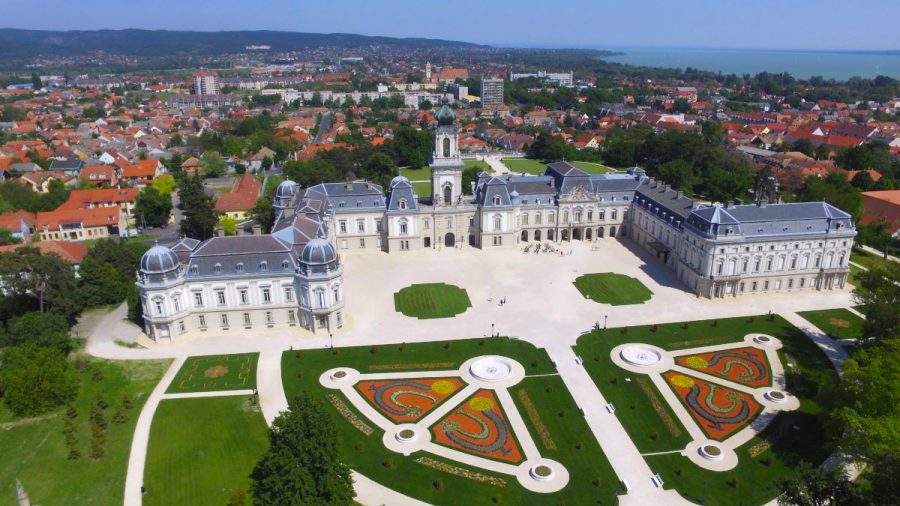The Festetics Palace in Keszthely is the third Hungarian palace in size, while it is the most popular with visitors. It functions as a museum and an events centre.
Christopher Festetics began the construction of the Festetics Palacein 1745. The two-storey, U-shaped, 34-room Baroque palace was rebuilt several times in the 18th and 19th centuries. Between 1769 and 1770 Paul Festetics III, Christopher’s son had the building reconstructed. The wings were enlarged while the facades remained unaltered. His son, George Festetics I, started the next major reconstruction in 1792. He added the southern library wing to the palace.
Between 1883 and 1887 Tassilo Festetics II had the northern wing demolished and a new wing built which was joined to the old one by a turreted central part. Thus, he almost doubled the size of the palace. The building was covered with a mansard roof, and fitted with central heating and plumbing. After the modification of the facades and the interiors, especially the staircases, the palace acquired its present form.
The building is surrounded by a nature reserve park. The sights in the park include trees that are hundreds of years old, colourful flowerbeds, fountains, statues – among them the full-figure bronze statue of George Festetics I –, the garden pond and the fountain decorated with lions. The palm house and the former coach house with the coach exhibition can be found in the park, while the new building of the hunting exhibition and the historical model railway exhibition is opposite the back gate of the park.



